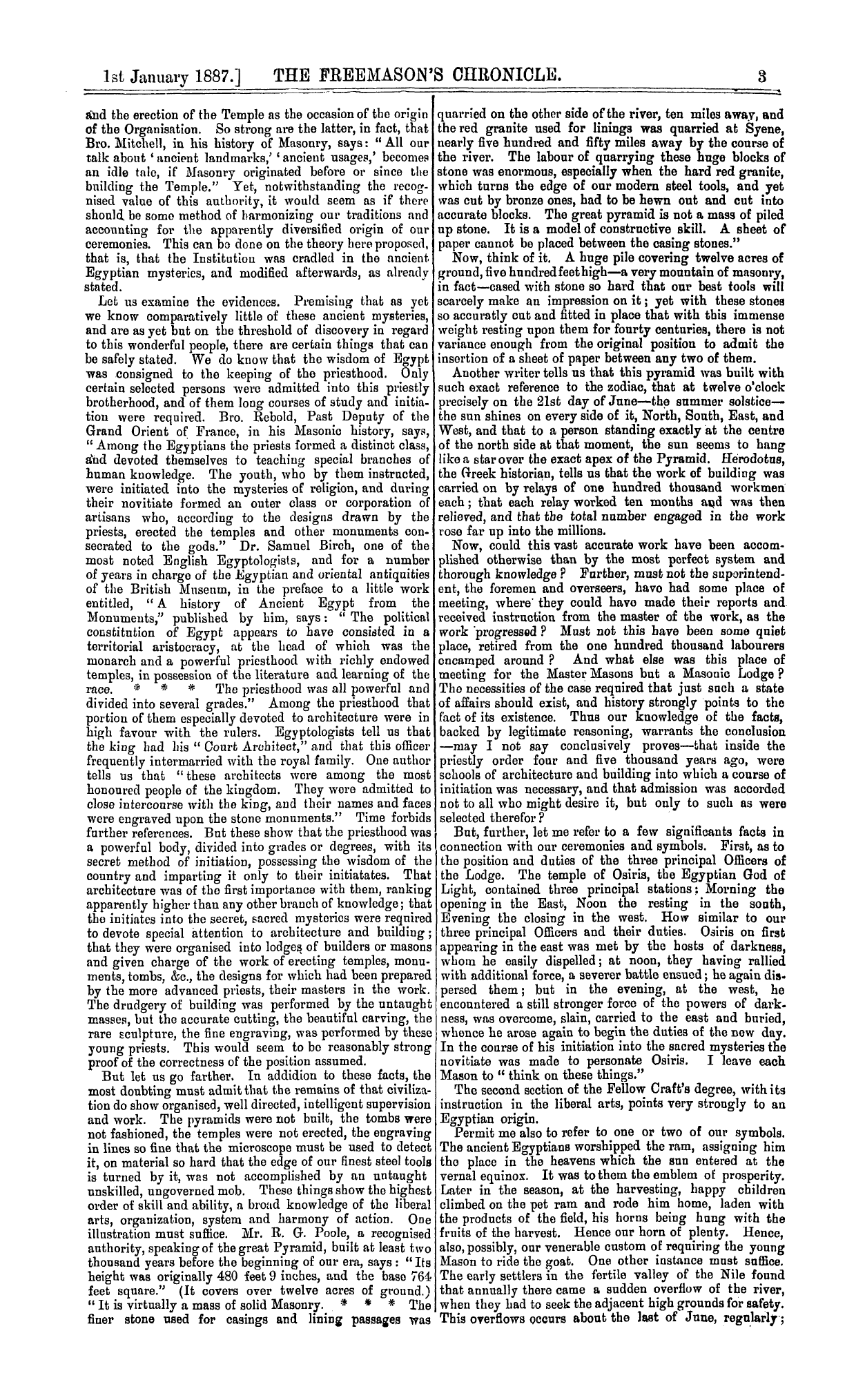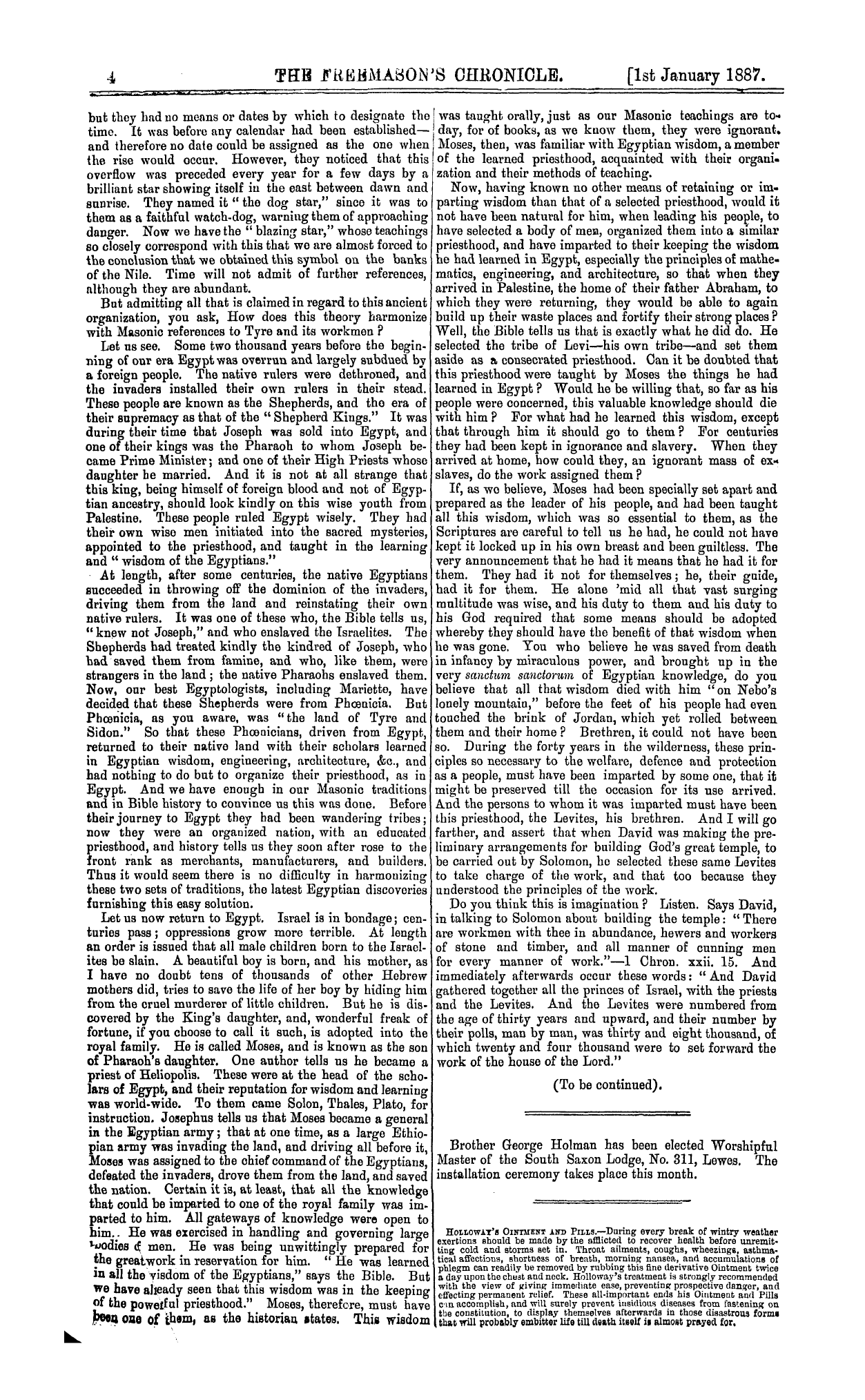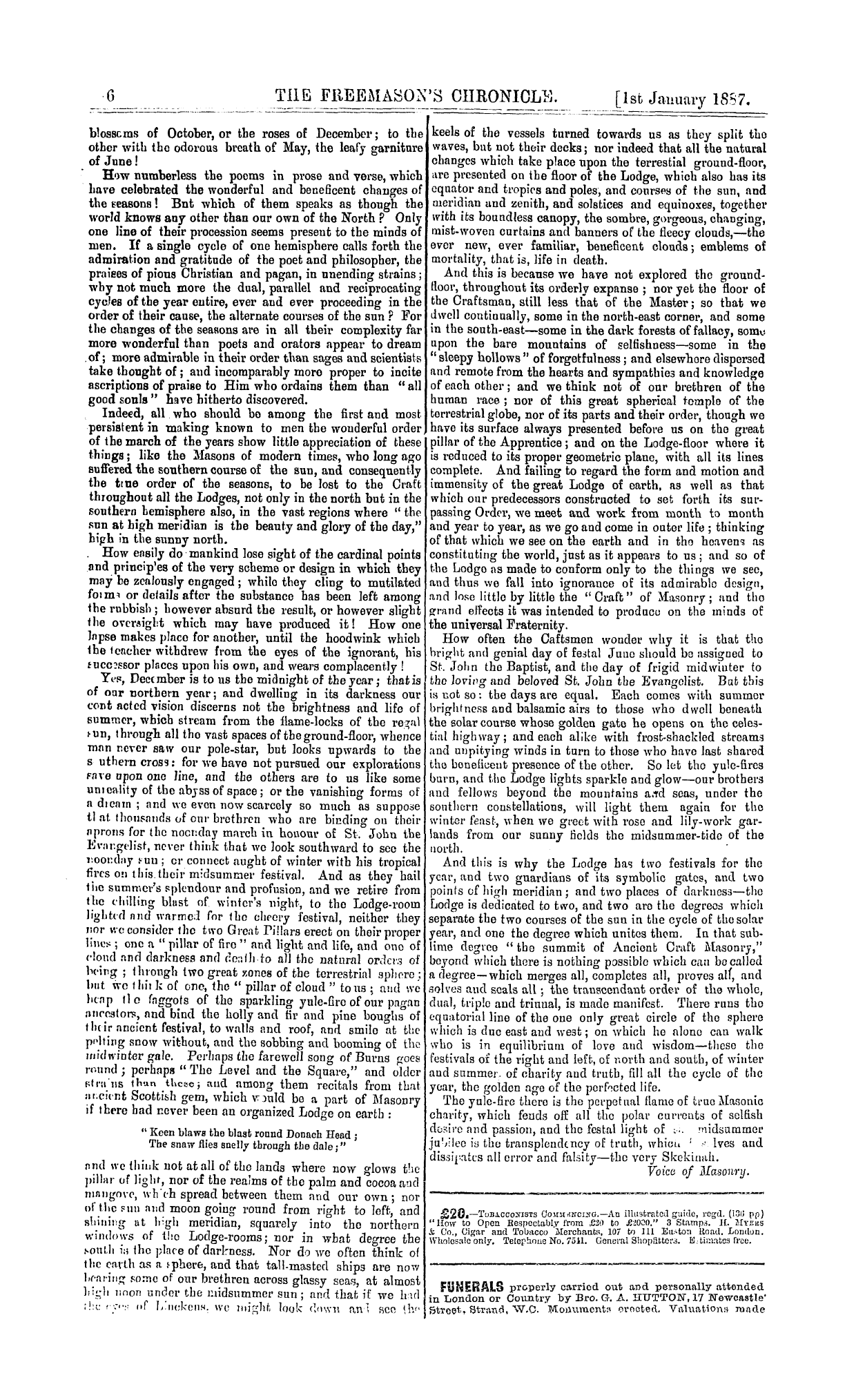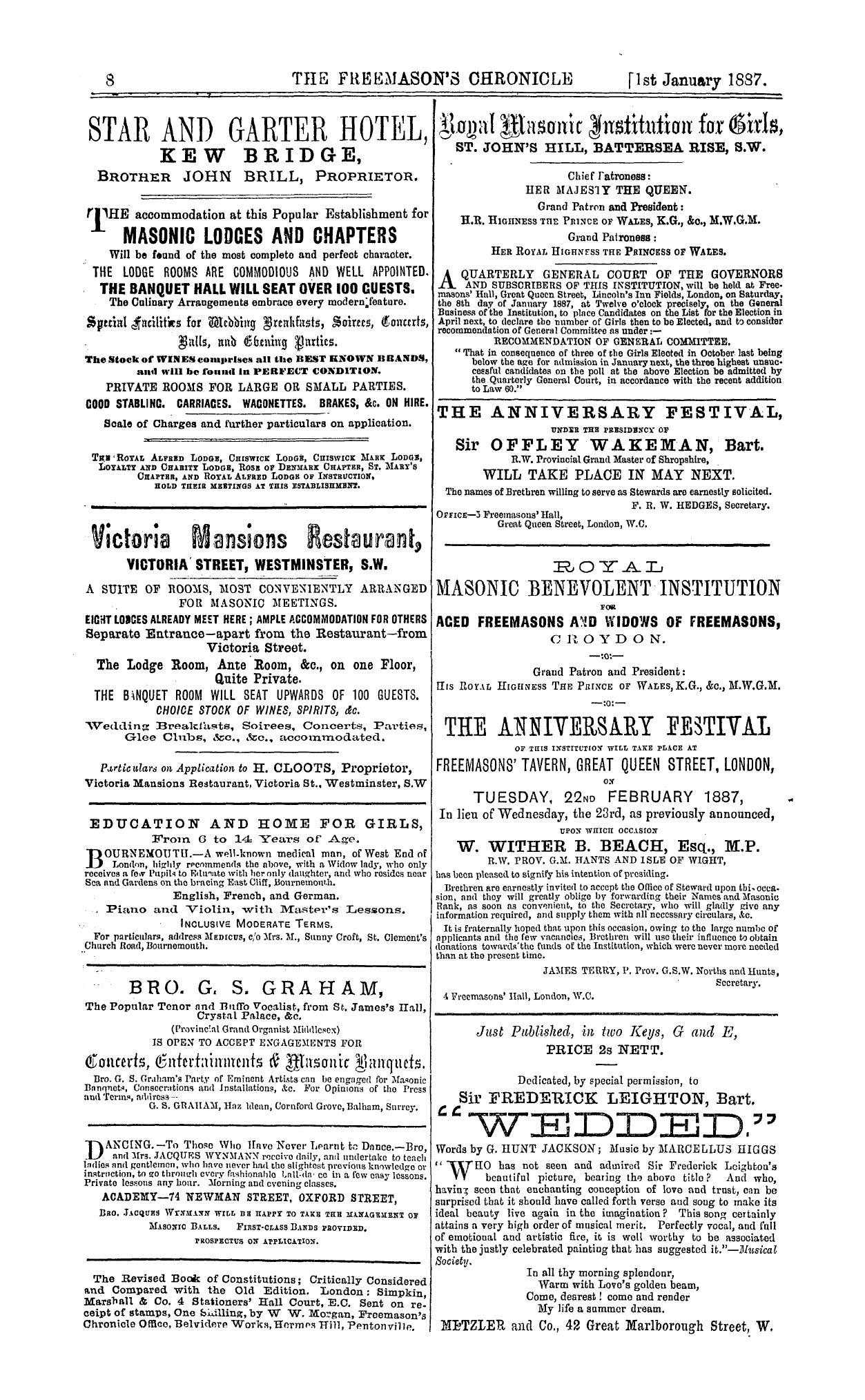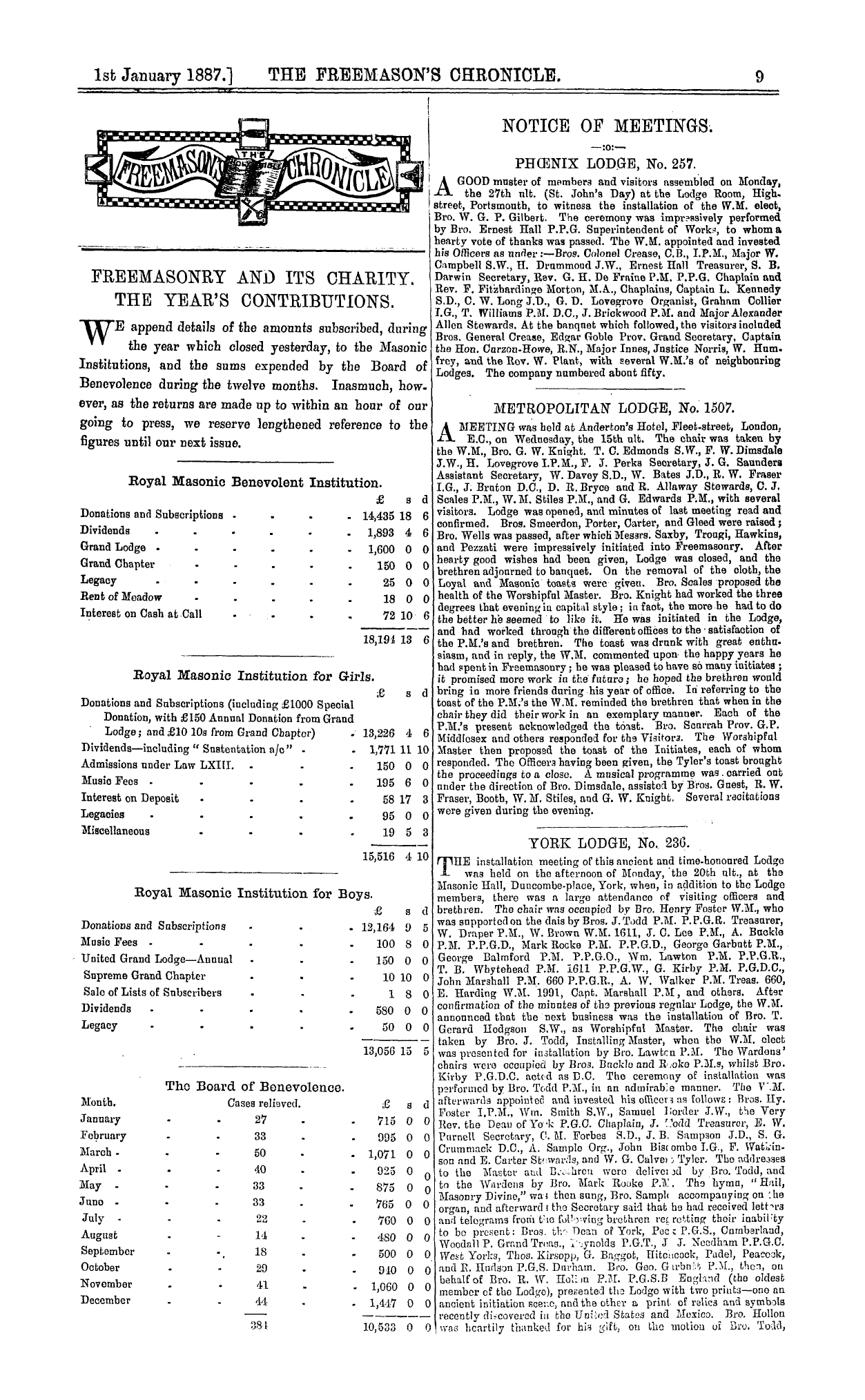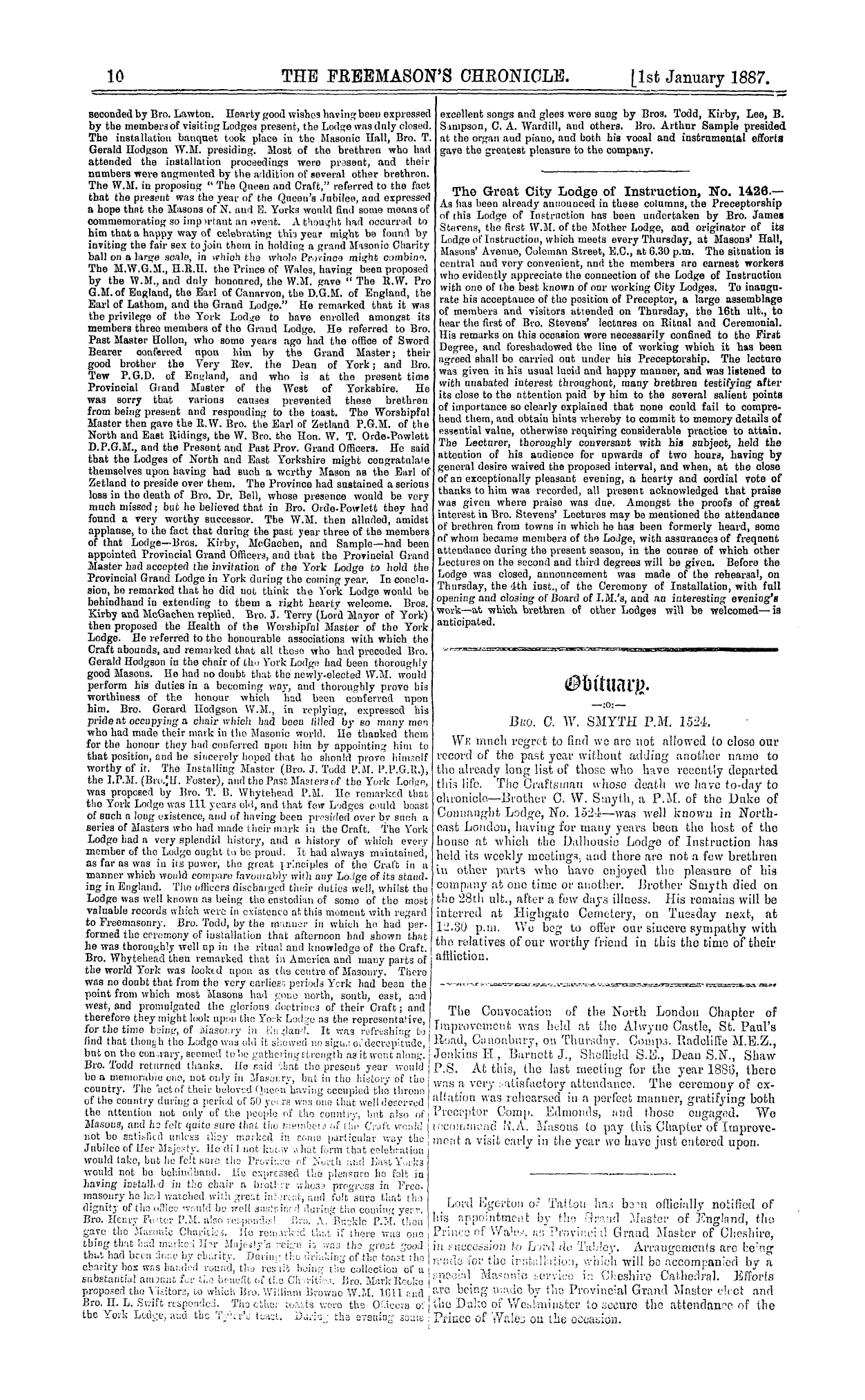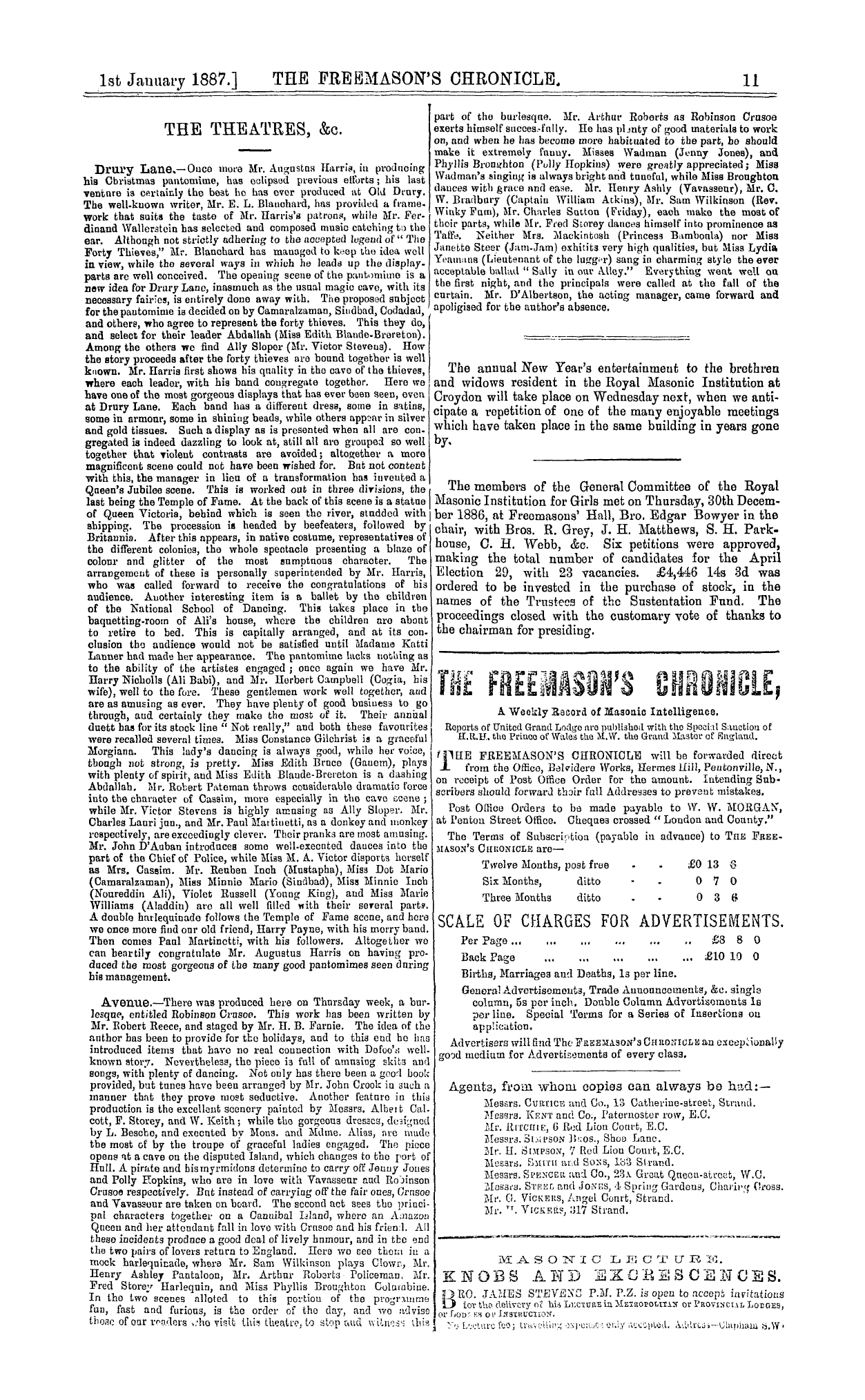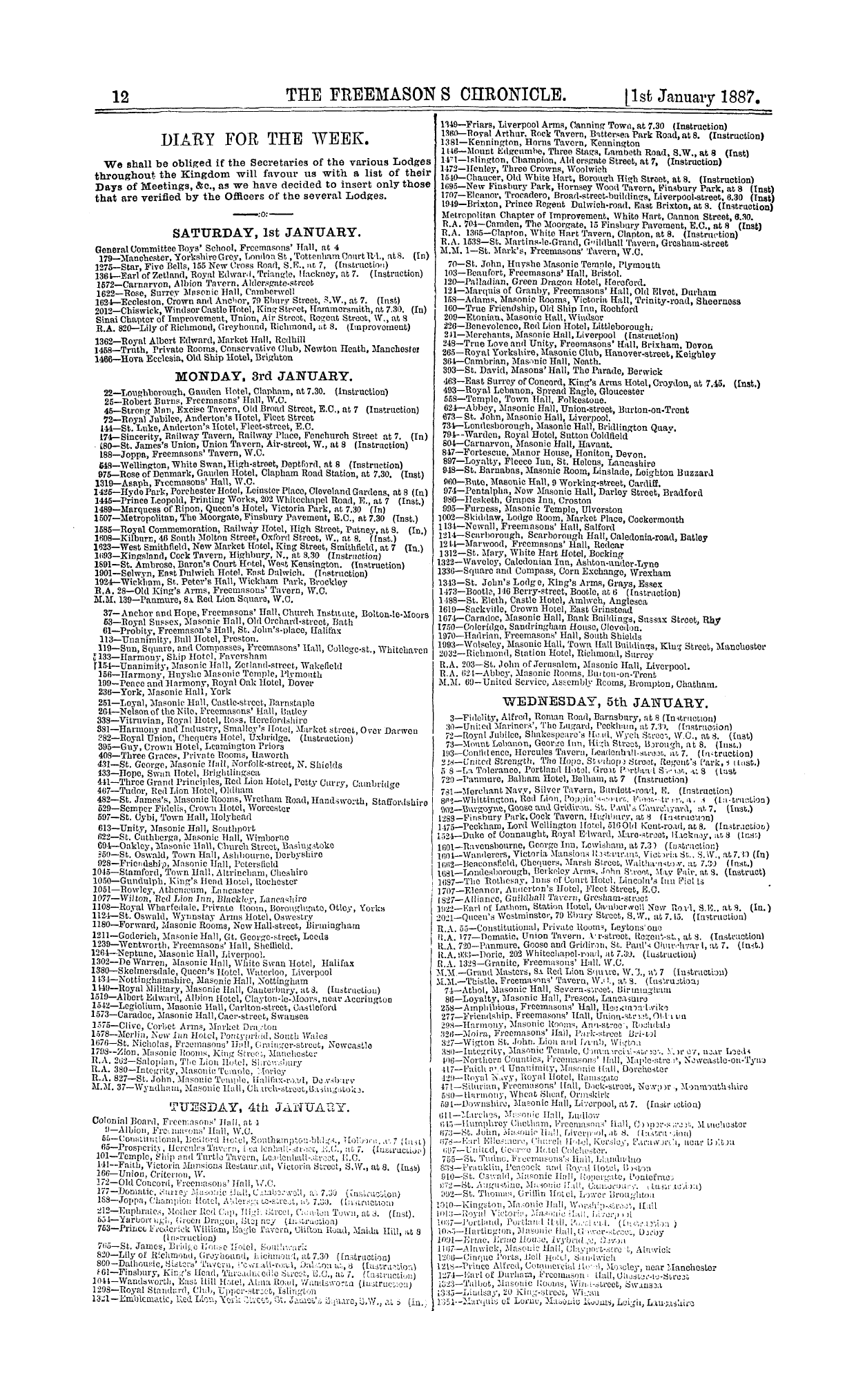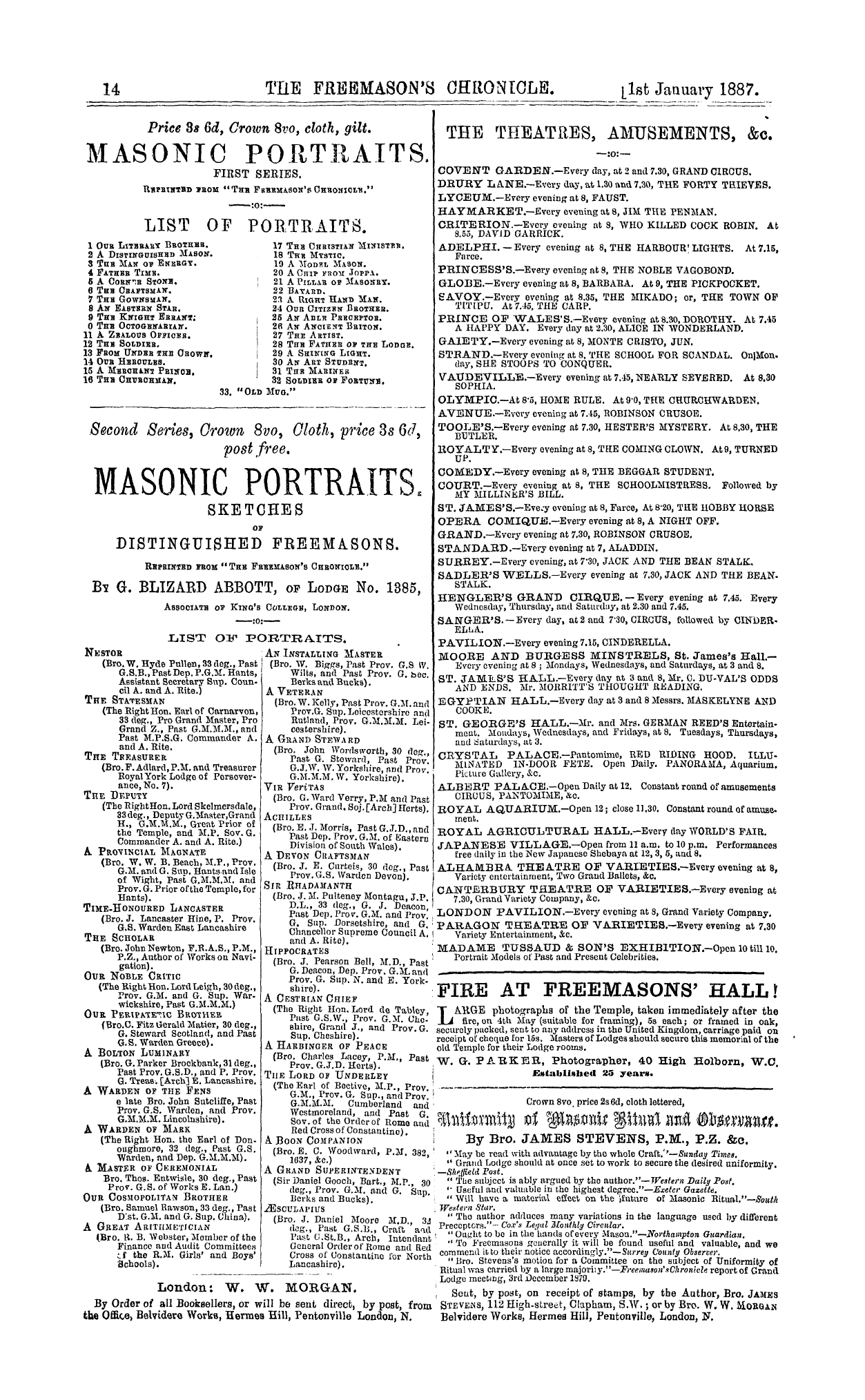-
Articles/Ads
Article THE INCOME AND EXPENDITURE OF THE BOARD OF BENEVOLENCE. ← Page 2 of 2 Article WHENCE FREEMASONRY CAME. Page 1 of 3 Article WHENCE FREEMASONRY CAME. Page 1 of 3 →
Note: This text has been automatically extracted via Optical Character Recognition (OCR) software.
The Income And Expenditure Of The Board Of Benevolence.
In 1882 , when Bro . Clabon again brought the finances of the Board of Benevolence before Grand Lodge , he sought powers to stop an annual decrease , instead of as in 1880 he strove to check an annual increase of accumulated Funds .
The plan hy which he proposed to effect this object was by increasing the dues annually paid by Brethren to the Fund of Benevolence ; but this proposal was not carried , and
though it was then urged that the Board of Benevolence must keep within its income , there is little or no change to record , unless it be that matters have gone from bad
to worse . Even bearing in mind the changes of the last seven years , and remembering the altered state of affairs since December 1882 , when Grand Lodge decided against an
increase in the annual dues of members generally , we are inclined to think that a proposition similar to that then made by Bro . Clabon would meet the same fate as befel it in 1882 , and yet what is to be done to check the gradual
extinction of the Invested Fund , which was encroached upon last year to the extent of upwards of £ 4 , 000 ? The only other way of keeping the expenditure within due
bounds is to lessen the grants , and much as such a course would be opposed to the ideas of English Craftsmen , it is one that will have to be adopted ere long , or within a
few years we shall have to make radical alterations in the whole working of the Board of Benevolence .
Whence Freemasonry Came.
WHENCE FREEMASONRY CAME .
An Oration hy Bight Wor . Isaac Clements , Grand Orator , hefore the Grand Lodge of Illinois , 6 th October 1886 .
WHEN a person begins looking over the field , with a view to preparing a Masonic lecture , he finds himself bewildered by the number and importance of the subjects thafc present themselves for consideration .
Masonry grows with the study of it . The question arises , when , and where , and how did it originate ? Whence fche name " Masonry ? " What is its object ? What are its methods ? What its use ? And as he seeks an answer
to these questions the field widens before him till it seems almost boundless in extent .
If he turns to question of its origin , he finds himself at the very outstart examining , not merely a benevolent organisation , arising out of present necessities , temporary in its character and ephemeral in its existence , but standing 1
at the portals of an Institution whose vistas stretch far back to the dim twilight of earth ' s early morning , where history is lost in tradition , ceases indeed to be history , and becomes only tradition . He finds it , or something
akin to it , existing as an applied science , as its name indicates , in the midst of the prehistoric civilisation of the Orient , and . he sees the work of its hands standing to-day ,
challenging the admiration and wonder of the world ; which were old when Abraham , a wandering shepherd , trod the yet unpeopled wilds of Palestine . These works
of art , temples , tombs , monuments , palaces like mountain peaks gleaming in the light of the setting sun , tell of a day that is past . A day of civilisation aud enlightenment
that had well nigh reached its meridian before Joseph was sold by his not yet civilised brethren to the Midianites . A civilisation the wings of whose commerce whitened every sea ; whose architecture designed and erected
buildings that modern times have never equalled ; whose mathematics calculated eclipses ; whose astronomy named the fixed stars , and gave the planets their places ; whose
wise men knew Arcturus , and the " belt of Orion , " and " felt the sweet influence of the Pleiades , " and whose other wise men , two thousand years afterwards , saw the Star in the East and knew it , and came and knelt at the
manger and worshipped . Turning to the question of its object , he finds that , as ifcs name indicates , its object was largely architecture and
building , but that in addition to these there was a complete system of symbolic teaching ; that scientific knowledge and moral instruction were thereby combined with practical skill and knowledge . As to its methods , he finds this ancient organisation , thus combining the instruction of the head and heart with
that of the hands , taught the young student , through his instructors in architecture and in practical building , that every physical duty has its spiritual counterpart ; jnsfc as fche yonng Freemason is now taught by his Masonic
Whence Freemasonry Came.
instructor . Was tho novice learning to form a perfect circle , he was taught that there is a higher moral circle , that bounds the perfectly rounded human character ; was he learning the use of the common gavel , he was taught
that there is a spiritual gavel whose work it is to remove the rough and the wrong from the moral character ; was he using the square and compass , he was taught that there is another square to square his actions ,
ancl another compass to circumscribe his passions and keep them in due bounds . And , indeed , from the laying of the corner-stone , when he was taught to lay firm and sure the principles of right and justice as the foundation of his life , to the time when he beheld the master builder take the
stone , "hewn , drawn and numbered in the quarries , place it in its position , saw it fit neatly and perfectly in the place for which it had been prepared , and heard the whole building , from capstone to foundation , pronounced
complete , perfect , without flaw or blemish , he was taught to so shape his life that it might be fitted , as a living stone , for a place in that spiritual building that they taught and believe " the Supreme Architect of the Universe " would
erect m the eternal hereafter . And so the student finds that all through his work the young Mason was taught to apply the finishing and perfecting processes of his daily work—by symbol—to finishing and perfecting his own manhood .
Having thus learned something of the probable origin of this ancient Institution , its object , and its methods of teaching , the student turns to its precepts , and he finds
them to have been intended , and to be still intended , for use in daily life . He sees them deeply graven on every stepping stone as he moves upward , beckoning him on
toward the infinite in good ; deeply engraven on every stepping stone as he moves downward , warning him away from the infinite in evil . And thus , in whatever direction he turns , he finds the field of thought and of work
widening before him even as the possibilities of man widen before him . Hence I have said , this student finds himself bewildered by the number and importance of the subjects that present themselves for consideration .
In thus looking over the field , it has occurred to me that a few thoughts based on the name of our organisation might not be without profit to us , and I have therefore selected the name " Ancient , Free and Accepted Masons " as the subject for this lecture .
Such an address , of course , must be largely historical , and will involve an investigation of the much mooted , but ever unsettled , question , of Masonic origin . In making thi 3 'investigation it will be contended that in the midst of
the most ancient civilisation of which we have any knowledge , that of Egypt , the learning and wisdom of the nation , including architecture , practical building , civil engineering , astronomy , and in fact all the " liberal arts "
as we know them in Masonry , were consigned to the keeping of certain organisations , reference to which has already been made , and that descended from these , in almost
unbroken lineage , has come the Freemasonry of to-day . The points of resemblance , and the legitimate , logical conclusions are strong enough , it seems to me , to convince
fair minded men of the correctness of this position . In tracing the growth of the organisation , also , the words " Free" and " Accepted " will each be found to mark
important epochs of its development . Both enemies and friends concede greater or less antiquity to Freemasonry . Masons themselves do not claim to know the exact date of its origin . In fact they willingly concede that since the
earliest dates of which they have traditional knowledge Masonry has undergone changes , just as municipal governments have done—brought about as necessary results of the growth and development of man . But they
do not concede that these changes in any wise affect tho landmarks , the principles or the peculiar symbolisms of Masonry . But they claim , permit me to say , that in these Masonry remains what it was thousands of years ago .
No , we do not claim to know the exact date of the beginning of Masonic organization . Our earliest authentic history simply shows the Institution already in existence fully organized , and at work . Passing beyond the limit of authentic history , into the dimly outlined fields of
tradition , we find that even here everything is not harmonious . Some of our traditions and ceremonies undoubtedly point toward the ancient Egyptian mysteries ; others refer directly to the kingdom of Tyre , aud Hiram , its ruler ; and others , and by far the stronger , let me admit , refer to Palestine and the reign of Solomon as the time and place ,
Note: This text has been automatically extracted via Optical Character Recognition (OCR) software.
The Income And Expenditure Of The Board Of Benevolence.
In 1882 , when Bro . Clabon again brought the finances of the Board of Benevolence before Grand Lodge , he sought powers to stop an annual decrease , instead of as in 1880 he strove to check an annual increase of accumulated Funds .
The plan hy which he proposed to effect this object was by increasing the dues annually paid by Brethren to the Fund of Benevolence ; but this proposal was not carried , and
though it was then urged that the Board of Benevolence must keep within its income , there is little or no change to record , unless it be that matters have gone from bad
to worse . Even bearing in mind the changes of the last seven years , and remembering the altered state of affairs since December 1882 , when Grand Lodge decided against an
increase in the annual dues of members generally , we are inclined to think that a proposition similar to that then made by Bro . Clabon would meet the same fate as befel it in 1882 , and yet what is to be done to check the gradual
extinction of the Invested Fund , which was encroached upon last year to the extent of upwards of £ 4 , 000 ? The only other way of keeping the expenditure within due
bounds is to lessen the grants , and much as such a course would be opposed to the ideas of English Craftsmen , it is one that will have to be adopted ere long , or within a
few years we shall have to make radical alterations in the whole working of the Board of Benevolence .
Whence Freemasonry Came.
WHENCE FREEMASONRY CAME .
An Oration hy Bight Wor . Isaac Clements , Grand Orator , hefore the Grand Lodge of Illinois , 6 th October 1886 .
WHEN a person begins looking over the field , with a view to preparing a Masonic lecture , he finds himself bewildered by the number and importance of the subjects thafc present themselves for consideration .
Masonry grows with the study of it . The question arises , when , and where , and how did it originate ? Whence fche name " Masonry ? " What is its object ? What are its methods ? What its use ? And as he seeks an answer
to these questions the field widens before him till it seems almost boundless in extent .
If he turns to question of its origin , he finds himself at the very outstart examining , not merely a benevolent organisation , arising out of present necessities , temporary in its character and ephemeral in its existence , but standing 1
at the portals of an Institution whose vistas stretch far back to the dim twilight of earth ' s early morning , where history is lost in tradition , ceases indeed to be history , and becomes only tradition . He finds it , or something
akin to it , existing as an applied science , as its name indicates , in the midst of the prehistoric civilisation of the Orient , and . he sees the work of its hands standing to-day ,
challenging the admiration and wonder of the world ; which were old when Abraham , a wandering shepherd , trod the yet unpeopled wilds of Palestine . These works
of art , temples , tombs , monuments , palaces like mountain peaks gleaming in the light of the setting sun , tell of a day that is past . A day of civilisation aud enlightenment
that had well nigh reached its meridian before Joseph was sold by his not yet civilised brethren to the Midianites . A civilisation the wings of whose commerce whitened every sea ; whose architecture designed and erected
buildings that modern times have never equalled ; whose mathematics calculated eclipses ; whose astronomy named the fixed stars , and gave the planets their places ; whose
wise men knew Arcturus , and the " belt of Orion , " and " felt the sweet influence of the Pleiades , " and whose other wise men , two thousand years afterwards , saw the Star in the East and knew it , and came and knelt at the
manger and worshipped . Turning to the question of its object , he finds that , as ifcs name indicates , its object was largely architecture and
building , but that in addition to these there was a complete system of symbolic teaching ; that scientific knowledge and moral instruction were thereby combined with practical skill and knowledge . As to its methods , he finds this ancient organisation , thus combining the instruction of the head and heart with
that of the hands , taught the young student , through his instructors in architecture and in practical building , that every physical duty has its spiritual counterpart ; jnsfc as fche yonng Freemason is now taught by his Masonic
Whence Freemasonry Came.
instructor . Was tho novice learning to form a perfect circle , he was taught that there is a higher moral circle , that bounds the perfectly rounded human character ; was he learning the use of the common gavel , he was taught
that there is a spiritual gavel whose work it is to remove the rough and the wrong from the moral character ; was he using the square and compass , he was taught that there is another square to square his actions ,
ancl another compass to circumscribe his passions and keep them in due bounds . And , indeed , from the laying of the corner-stone , when he was taught to lay firm and sure the principles of right and justice as the foundation of his life , to the time when he beheld the master builder take the
stone , "hewn , drawn and numbered in the quarries , place it in its position , saw it fit neatly and perfectly in the place for which it had been prepared , and heard the whole building , from capstone to foundation , pronounced
complete , perfect , without flaw or blemish , he was taught to so shape his life that it might be fitted , as a living stone , for a place in that spiritual building that they taught and believe " the Supreme Architect of the Universe " would
erect m the eternal hereafter . And so the student finds that all through his work the young Mason was taught to apply the finishing and perfecting processes of his daily work—by symbol—to finishing and perfecting his own manhood .
Having thus learned something of the probable origin of this ancient Institution , its object , and its methods of teaching , the student turns to its precepts , and he finds
them to have been intended , and to be still intended , for use in daily life . He sees them deeply graven on every stepping stone as he moves upward , beckoning him on
toward the infinite in good ; deeply engraven on every stepping stone as he moves downward , warning him away from the infinite in evil . And thus , in whatever direction he turns , he finds the field of thought and of work
widening before him even as the possibilities of man widen before him . Hence I have said , this student finds himself bewildered by the number and importance of the subjects that present themselves for consideration .
In thus looking over the field , it has occurred to me that a few thoughts based on the name of our organisation might not be without profit to us , and I have therefore selected the name " Ancient , Free and Accepted Masons " as the subject for this lecture .
Such an address , of course , must be largely historical , and will involve an investigation of the much mooted , but ever unsettled , question , of Masonic origin . In making thi 3 'investigation it will be contended that in the midst of
the most ancient civilisation of which we have any knowledge , that of Egypt , the learning and wisdom of the nation , including architecture , practical building , civil engineering , astronomy , and in fact all the " liberal arts "
as we know them in Masonry , were consigned to the keeping of certain organisations , reference to which has already been made , and that descended from these , in almost
unbroken lineage , has come the Freemasonry of to-day . The points of resemblance , and the legitimate , logical conclusions are strong enough , it seems to me , to convince
fair minded men of the correctness of this position . In tracing the growth of the organisation , also , the words " Free" and " Accepted " will each be found to mark
important epochs of its development . Both enemies and friends concede greater or less antiquity to Freemasonry . Masons themselves do not claim to know the exact date of its origin . In fact they willingly concede that since the
earliest dates of which they have traditional knowledge Masonry has undergone changes , just as municipal governments have done—brought about as necessary results of the growth and development of man . But they
do not concede that these changes in any wise affect tho landmarks , the principles or the peculiar symbolisms of Masonry . But they claim , permit me to say , that in these Masonry remains what it was thousands of years ago .
No , we do not claim to know the exact date of the beginning of Masonic organization . Our earliest authentic history simply shows the Institution already in existence fully organized , and at work . Passing beyond the limit of authentic history , into the dimly outlined fields of
tradition , we find that even here everything is not harmonious . Some of our traditions and ceremonies undoubtedly point toward the ancient Egyptian mysteries ; others refer directly to the kingdom of Tyre , aud Hiram , its ruler ; and others , and by far the stronger , let me admit , refer to Palestine and the reign of Solomon as the time and place ,


